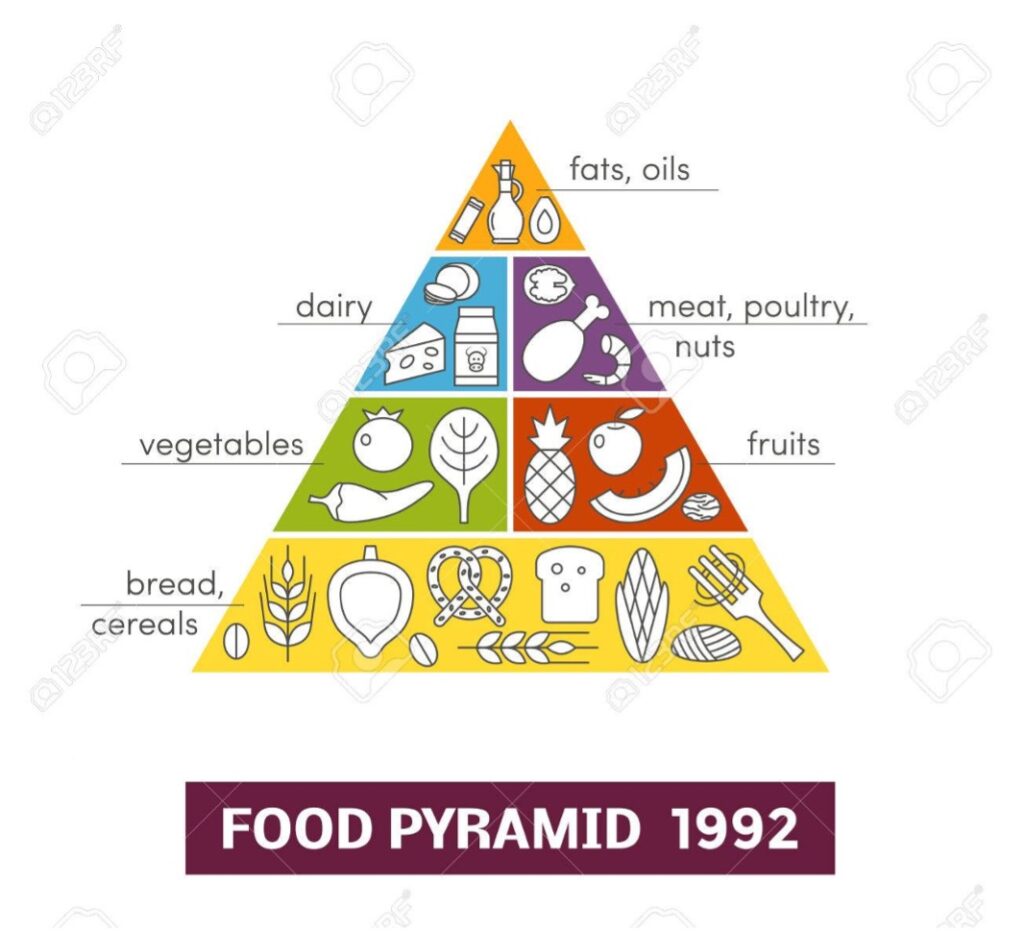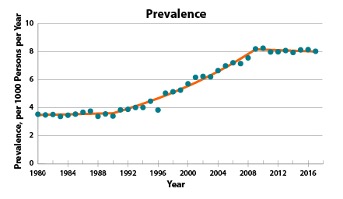May 18, 2023
Going Against the Grain


By Julie Gregory, Chief Health Liaison for Apollo Health
One of the things that sets KetoFLEX 12/3 apart from other brain-healthy diets, such as the MIND and Mediterranean Diets, is our exclusion of “healthy” whole grains. This recommendation is both confusing and difficult for many people to understand. After all, grains have been a worldwide staple and are undeniably life-sustaining in many parts of the world. Even here in the US, we’ve been told for decades that whole grains should make up the bulk of our diet. It’s interesting to look at the origins of this recommendation and how it has impacted our national health
How Grains Have Impacted America
By 1980, the mainstream medical establishment had adopted and widely disseminated a low-fat ideology to promote heart health and slim bodies with the first edition of the Dietary Guidelines for America.1 Americans were instructed to reduce their intake of fatty foods and to replace those calories with carbohydrates, emphasizing the idea that gram for gram, carbohydrates were preferable because they had less than half the calories of fat, so you can eat twice as much food. To be fair, the recommended carbohydrates were presented in this order: beans, peas, nuts, seeds, fruits, vegetables, whole grain breads, cereals, and products. By 1992, however, when the first USDA food pyramid was introduced, grains took center stage at the bottom of the food pyramid, which recommended between six to eleven servings per day. Sadly, no distinction was made between whole grains and highly processed grains. Apparently, this decision was heavily influenced by lobbying efforts from the grain industry.2

These dietary recommendations have had profound effects on the health of Americans. Since 1980, when the government issued its first set of dietary guidelines, the number of Americans who are obese or have type-2 diabetes has more than doubled. A condition called insulin resistance precedes diabetes and affects a majority of adults in the U.S.
It’s important to understand why this matters in terms of cognitive health. Insulin resistance ultimately reduces the brain’s ability to effectively use glucose as fuel and prevents our ability to achieve ketosis as a backup fuel source — essentially starving the brain. The relationship between insulin resistance and insufficient brain fuel is so strong that some have called Alzheimer’s “diabetes of the brain” or type 3 diabetes.3 To learn more, see Why is Ketosis Important to Brain Health?
How American Wheat is Different
Americans overconsume ultra-processed versions of grains that are very different from properly prepared whole-grain versions found in other parts of the world. Indeed, grains in the U.S. have been heavily engineered to be lucrative crops without regard to their effect on human health. The hybridization of wheat is an excellent example of agribusiness gone awry. Over centuries it’s changed dramatically to become highly inflammatory. Even small amounts of gluten, the most well-known culprit for impairing health, has been shown to activate zonulin to create increased gut permeability that can allow toxins into the bloodstream and potentially through the blood-brain barrier.4 Ever-increasing amounts of gluten have been added to whole grain baked goods in an effort to improve their texture and ability to rise.
Gluten can be further broken down into glutenin and gliadin, the main glue-like proteins found in wheat, rye, and barley. Of the two, gliadin is more damaging, and the variety commonly used, Glia-α9 epitope, has been linked to increased prevalence of celiac disease.5 It is difficult for the gut to digest fully. Undigested gliadin leaves biologically active peptides in the gut causing inflammation due to the stimulation of helper T-cells. It also interferes with the gut’s permeability and negatively alters the microbiome. Additionally, modern wheat has been engineered for increased amounts of a naturally occurring lectin called wheat germ agglutinin (WGA) to help fend off insects and create a hardier and more sustainable crop that has inadvertently led to detrimental effects on human health, including increased gut permeability, autoimmunity, and widespread inflammation.6 Finally, compared to ancient wheat, modern-day varieties have higher amounts of antinutrients, like phytates, and lower amounts of healthful minerals, negatively impacting the body’s ability to absorb the zinc, iron, copper, and magnesium that It needs to thrive.7
It’s not just wheat that’s problematic. All grains, including oats, rice, corn, etc., can also dramatically spike blood glucose, leading to insulin resistance and systemic inflammation. Additionally, 93% of the corn crop in the US is genetically modified (GMO), which has been associated with negative effects to the gut microbiome, increased risk for antibiotic resistance, disruptions of the endocrine system, disorders of the reproductive system, and pro-aging effects.8 An additional health consideration with GMO crops, which comprise the vast majority of grains in the US, is that they are heavily sprayed with the weed killer glyphosate, which is known to cause cancer through DNA mutations and has been associated with many other toxic effects. Indeed, evidence is mounting that glyphosate interferes with many metabolic processes, disrupts the endocrine system, and damages the gut affecting the microbiome.9 Finally, don’t think you can avoid all of the problems with wheat or other grains by buying gluten-free options. These are ultra-processed foods, low in fiber, high in inflammatory oils with no nutritional value, and will also cause dramatic increases in blood glucose.
The MIND Diet
There are flaws in the methodology behind the MIND Diet research, which also concluded that whole grains should comprise the bulk of the diet — more than 21 servings per week! This recommendation arose from adherence to the “MIND Diet score,” which assigned a ranking to 15 foods (and portion sizes) derived from the DASH and Mediterranean Diets that were determined to be important to cognitive health based on a review of published literature. It’s important to note that none of the papers referenced examined the effect of whole grains on cognition but rather the importance of specific vitamins and fatty acids.10,11,12 Both the addition of whole grains and their large portion size (>3 servings daily) appears to be a remnant of previous dietary recommendations. Additionally, none of the 15 foods that comprise the MIND Diet score were statistically analyzed on their own but rather lumped into a single composite score.
This is not to dismiss the important information that has emerged from the MIND Diet research. By examining annual food frequency questionnaires from over 1,000 elderly seniors and correlating this data with cognitive health over an almost five-year period, a strong signal has emerged that specific dietary patterns (which also include leafy greens, other vegetables, berries, nuts, olive oil, fish, etc.) appear to be protective against future cognitive decline.
The Mediterranean Diet
Grains, especially wheat, are an important part of the Mediterranean Diet, which has also been found to benefit cognition.13 It’s important to understand that wheat in the Mediterranean region is a far different product than wheat found in America. First, the majority of American wheat is made from hard, red wheat, which has the highest protein level of all wheat varieties, notably gluten. It is softer, fluffier, and more shelf stable than its European counterpart. The most common wheat in Europe is soft wheat, which is lower in protein, especially gluten.
Secondly, the soil in the US may also be affecting the quality of American wheat. The top wheat-producing states are Kansas, Washington, and North Dakota, where the soil is notably deficient in sulfur.14 This could be important as sulfur can apparently modify the gliadin content in wheat. (You’ll recall that gliadin is the component in gluten, associated with allergenic potential.) Research shows that the less sulfur that is in the soil, the higher the gliadin content.15
Finally, wheat in the US is heavily sprayed with the herbicide glyphosate (often twice), which has been linked to a host of profound health issues described above. Glyphosate is not used as frequently in Europe, where it has been heavily restricted or banned in many countries due to health concerns. Given the significant differences between wheat in Mediterranean regions vs. wheat found in the US, It may be worth reconsidering its role as a “health” food in the American version of the diet. A significant amount of research has found that other components of the Mediterranean Diet have been found to be neuroprotective, including the wide variety of non-starchy vegetables, fruits, and, most importantly, the polyunsaturated and monounsaturated fats, which are the hallmark of a Mediterranean Diet that include high polyphenol extra virgin olive oil, nuts, seeds, and fatty fish.
A New Direction for a Neuroprotective Diet
While heavily borrowing from the MIND and the Mediterranean Diet research, KetoFLEX 12/3 goes “against the grain” by eliminating whole grains but still uses the major components from both diets —phytonutrient rich non-starchy vegetables, (esp. leafy greens), fruits (esp. berries), legumes, nuts, seeds, high polyphenol olive oil, and fatty fish — and adds a few extras including mushrooms, green tea, spices, fermented food, etc. that have independently been found to either slow cognitive decline or actually improve cognition to create the ultimate neuroprotective diet.16,17,18,19 While KetoFLEX 12/3 needs more research, it is the only diet that has been shown actually to improve cognition in those with early-stage dementia.20
Click on the link to learn more about KetoFLEX 12/3. You can now try it at home with a meal delivery service; learn more here.
1) https://www.ncbi.nlm.nih.gov/pmc/articles/PMC7246646/
2)https://www.ncbi.nlm.nih.gov/pmc/articles/PMC6996528/
3) https://pubmed.ncbi.nlm.nih.gov/20664999/
4) https://www.mdpi.com/2072-6643/5/3/771
5) https://pubmed.ncbi.nlm.nih.gov/19013359/
6) https://www.mdpi.com/2072-6643/5/3/771
7) https://pubmed.ncbi.nlm.nih.gov/19013359/
8) https://www.ers.usda.gov/data-products/adoption-of-genetically-engineered-crops-in-the-u-s/recent-trends-in-ge-adoption/
9) http://www.organic-systems.org/journal/92/JOS_Volume-9_Number-2_Nov_2014-Swanson-et-al.pdf
10) https://pubmed.ncbi.nlm.nih.gov/25323849/
11) https://pubmed.ncbi.nlm.nih.gov/22067138/
12) https://pubmed.ncbi.nlm.nih.gov/24970568/
13) https://pubmed.ncbi.nlm.nih.gov/34682764/
14) https://content.iospress.com/media/jad/2017/58-3/jad-58-3-jad170059/jad-58-jad170059-g001.jpg?width=755
15) https://www.nature.com/articles/s42003-021-02458-7
16) https://pubmed.ncbi.nlm.nih.gov/31413233/
17) https://pubmed.ncbi.nlm.nih.gov/31137655/
18) https://pubmed.ncbi.nlm.nih.gov/34279199/
19) https://www.ncbi.nlm.nih.gov/pmc/articles/PMC9137914/
20) https://content.iospress.com/articles/journal-of-alzheimers-disease/jad215707







